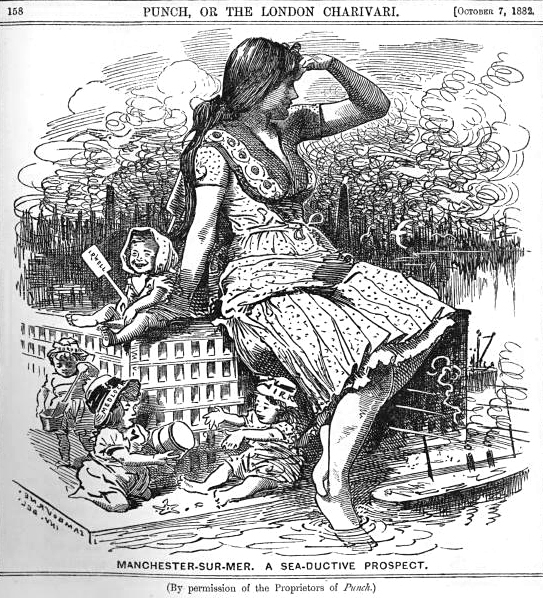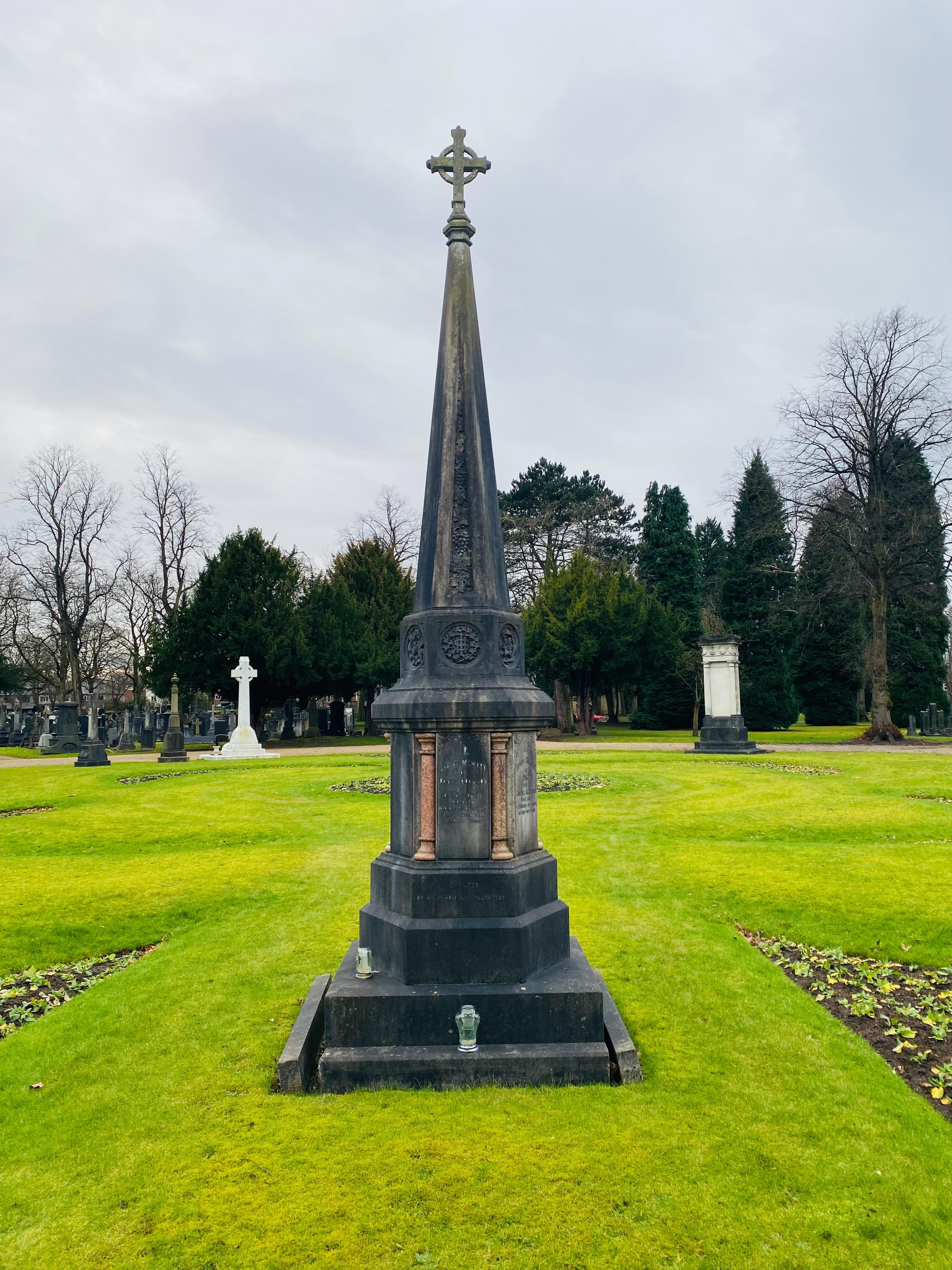|
Daniel Adamson (boat)
The ''Daniel Adamson'' also known as ''The Danny'' is a historic Steam engine, steam-powered tugboat. History The boat was built as a tug-tender in 1903 for the Shropshire Union Canal Company and named the ''Ralph Brocklebank''. Between 1903 and 1915 it towed barges, and carried passengers, along the Mersey, thereafter it only towed freight. The boat was bought by the Manchester Ship Canal Company in 1921 and used as a tug, however it was also operated as a cruise boat between Manchester and Eastham that included a return train-trip from Ellesmere Port to Manchester. In 1936 it was converted into a luxury passenger vessel and renamed after the first chairman of the Manchester Ship Canal Company, Daniel Adamson. In 1986 the boat was at the National Waterways Museum in Ellesmere Port. By 2004 the boat was in disrepair and under threat of being scrapped, a rescue plan was initiated that resulted in a £3 million award from The National Lottery that enabled ''The Danny'' to retur ... [...More Info...] [...Related Items...] OR: [Wikipedia] [Google] [Baidu] |
Steamboat Daniel Adamson Under Way In The Manchester Ship Canal (2017)
A steamboat is a boat that is marine propulsion, propelled primarily by marine steam engine, steam power, typically driving propellers or Paddle steamer, paddlewheels. The term ''steamboat'' is used to refer to small steam-powered vessels working on lakes, rivers, and in short-sea shipping. The development of the steamboat led to the larger steamship, which is a seaworthy and often ocean-going ship. Steamboats sometimes use the ship prefix, prefix designation SS, S.S. or S/S (for 'Screw Steamer') or PS (for 'Paddle Steamer'); however, these designations are most often used for steamships. Background Limitations of the Newcomen steam engine The first steamboat designs used Newcomen atmospheric engine, Newcomen steam engines. These engines were large, heavy, and produced little power, which resulted in an unfavorable power-to-weight ratio. The heavy weight of the Newcomen engine required a structurally strong boat, and the reciprocating motion of the engine beam required a compli ... [...More Info...] [...Related Items...] OR: [Wikipedia] [Google] [Baidu] |
Steam Engine
A steam engine is a heat engine that performs Work (physics), mechanical work using steam as its working fluid. The steam engine uses the force produced by steam pressure to push a piston back and forth inside a Cylinder (locomotive), cylinder. This pushing force can be transformed by a connecting rod and Crank (mechanism), crank into rotational force for work. The term "steam engine" is most commonly applied to reciprocating engines as just described, although some authorities have also referred to the steam turbine and devices such as Hero's aeolipile as "steam engines". The essential feature of steam engines is that they are external combustion engines, where the working fluid is separated from the combustion products. The ideal thermodynamic cycle used to analyze this process is called the Rankine cycle. In general usage, the term ''steam engine'' can refer to either complete steam plants (including Boiler (power generation), boilers etc.), such as railway steam locomot ... [...More Info...] [...Related Items...] OR: [Wikipedia] [Google] [Baidu] |
Tugboat
A tugboat or tug is a marine vessel that manoeuvres other vessels by pushing or pulling them, with direct contact or a tow line. These boats typically tug ships in circumstances where they cannot or should not move under their own power, such as in crowded harbors or narrow canals, or cannot move at all, such as barges, disabled ships, log rafts, or oil platforms. Some are ocean-going, and some are icebreakers or salvage tugs. Early models were powered by steam engines, which were later superseded by diesel engines. Many have deluge gun water jets, which help in firefighting, especially in harbours. Types Seagoing Seagoing tugs (deep-sea tugs or ocean tugboats) fall into four basic categories: #The standard seagoing tug with model bow that tows almost exclusively by way of a wire cable. In some rare cases, such as some USN fleet tugs, a synthetic rope hawser may be used for the tow in the belief that the line can be pulled aboard a disabled ship by the crew owing t ... [...More Info...] [...Related Items...] OR: [Wikipedia] [Google] [Baidu] |
Steamer Daniel Adamson Having Just Passed The Barton Road Swing Bridge And Barton Aqueduct
Steamer may refer to: Transportation * Steamboat, smaller, insular boat on lakes and rivers * Steamship, ocean-faring ship * Screw steamer, steamboat or ship that uses "screws" (propellers) * Steam yacht, luxury or commercial yacht * Paddle steamer, steamboat or ship with a paddlewheel * Steam car, generic term for a car powered by a steam engine * Stanley Steamer, model of steam-powered car * Steam locomotive, locomotive propelled by steam-operated pistons Sports * Steamer Flanagan (1881–1947), Major League Baseball player * Steamer Horning (1892–1982), American football player * Steamer Maxwell (1890–1975), Canadian amateur ice-hockey player * Stan Smyl (born 1958), captain of the Vancouver Canucks, nicknamed "the Steamer" Other uses * Steamer (milk), a flavored milk drink * Steamer (wetsuit), covers the torso and arms and legs * Steamer trunk, a type of luggage * ''The Steamer'', an album by jazz saxophonist Stan Getz * Clothes steamer * Food steamer * Fastball, nickna ... [...More Info...] [...Related Items...] OR: [Wikipedia] [Google] [Baidu] |
Manchester Ship Canal Company
The Manchester Ship Canal is a inland waterway in the North West of England linking Manchester to the Irish Sea. Starting at the Mersey Estuary at Eastham, near Ellesmere Port, Cheshire, it generally follows the original routes of the rivers Mersey and Irwell through the historic counties of Cheshire and Lancashire before joining the latter at Salford Quays. Several sets of locks lift vessels about to the canal's terminus in Manchester. Landmarks along its route include the Barton Swing Aqueduct, the world's only swing aqueduct, and Trafford Park, the world's first planned industrial estate and one of the largest in Europe. The rivers Mersey and Irwell were first made navigable in the early 18th century. Goods were also transported on the Runcorn extension of the Bridgewater Canal (from 1776) and the Liverpool and Manchester Railway (from 1830) but by the late 19th century the Mersey and Irwell Navigation had fallen into disrepair and was often unusable. Manchester's busine ... [...More Info...] [...Related Items...] OR: [Wikipedia] [Google] [Baidu] |
Daniel Adamson
Daniel Adamson (30 April 1820 – 13 January 1890) was an English engineer who became a successful manufacturer of boilers and was the driving force behind the inception of the Manchester Ship Canal project during the 1880s. Early life Adamson was born in Shildon, County Durham, on 30 April 1820. He was the 13th of 15 children – seven boys and eight girls – born to Daniel Adamson, landlord of the Grey Horse public house in Shildon, and his wife, Ann. Adamson was educated at Edward Walton Quaker School, Old Shildon, until the age of thirteen, when he left to become an apprentice to Timothy Hackworth, engineer to the Stockton and Darlington Railway, with whom he went on to serve as a draughtsman and engineer. By 1850, he had risen to become general manager of the Stockton and Darlington engine works ( Soho Works, Shildon), and moved to become manager of Heaton Foundry in Stockport. Business In 1851 he established a small iron works in Newton, Cheshire, expanding i ... [...More Info...] [...Related Items...] OR: [Wikipedia] [Google] [Baidu] |
National Waterways Museum
The National Waterways Museum (NWM) is a transport museum, at Ellesmere Port in the English county of Cheshire, which concentrates on the history of Britain's navigable inland waterways. Until 2010, the Waterways Trust operated three sites, including this one, under the name National Waterways Museum. In that year, the site at Gloucester was renamed the Gloucester Waterways Museum and the site at Stoke Bruerne became The Canal Museum. The Ellesmere Port museum is situated at the northern end of the Shropshire Union Canal where it meets the Manchester Ship Canal (). The NWM's collections and archives focus on the Britain's navigable inland waterways, including its rivers and canals of the United Kingdom, canals, and include Barge, canal boats, traditional clothing, painted canal decorative ware and tools. It is one of several museums and attractions operated by the Canal & River Trust, the successor to The Waterways Trust. History Industrial age The NWM site occupies the former ... [...More Info...] [...Related Items...] OR: [Wikipedia] [Google] [Baidu] |
The National Lottery
The National Lottery is the state- franchised national lottery established in 1994 in the United Kingdom. It is regulated by the Gambling Commission, and is operated by Allwyn Entertainment, who took over from Camelot Group (who had been running the National Lottery since its inception) on 1 February 2024. Prizes are paid as a lump sum (with the exception of the Set For Life which is paid over a set period) and are tax-free. Of all money spent on National Lottery games, around 53% goes to the prize fund and 25% to "good causes" as set out by Parliament (though some of this is considered by some to be a form of "stealth tax" levied to support the National Lottery Community Fund, a fund constituted to support public spending). 12% goes to the UK government as lottery duty, 4% to retailers as commission, and a total of 5% to the operator, with 4% to cover operating costs and 1% as profit. Since 22 April 2021, players must be 18 years of age to purchase lottery tickets and scratch ... [...More Info...] [...Related Items...] OR: [Wikipedia] [Google] [Baidu] |
Steamboats
A steamboat is a boat that is marine propulsion, propelled primarily by marine steam engine, steam power, typically driving propellers or Paddle steamer, paddlewheels. The term ''steamboat'' is used to refer to small steam-powered vessels working on lakes, rivers, and in short-sea shipping. The development of the steamboat led to the larger steamship, which is a seaworthy and often ocean-going ship. Steamboats sometimes use the ship prefix, prefix designation SS, S.S. or S/S (for 'Screw Steamer') or PS (for 'Paddle Steamer'); however, these designations are most often used for steamships. Background Limitations of the Newcomen steam engine The first steamboat designs used Newcomen atmospheric engine, Newcomen steam engines. These engines were large, heavy, and produced little power, which resulted in an unfavorable power-to-weight ratio. The heavy weight of the Newcomen engine required a structurally strong boat, and the reciprocating motion of the engine beam required a compli ... [...More Info...] [...Related Items...] OR: [Wikipedia] [Google] [Baidu] |







